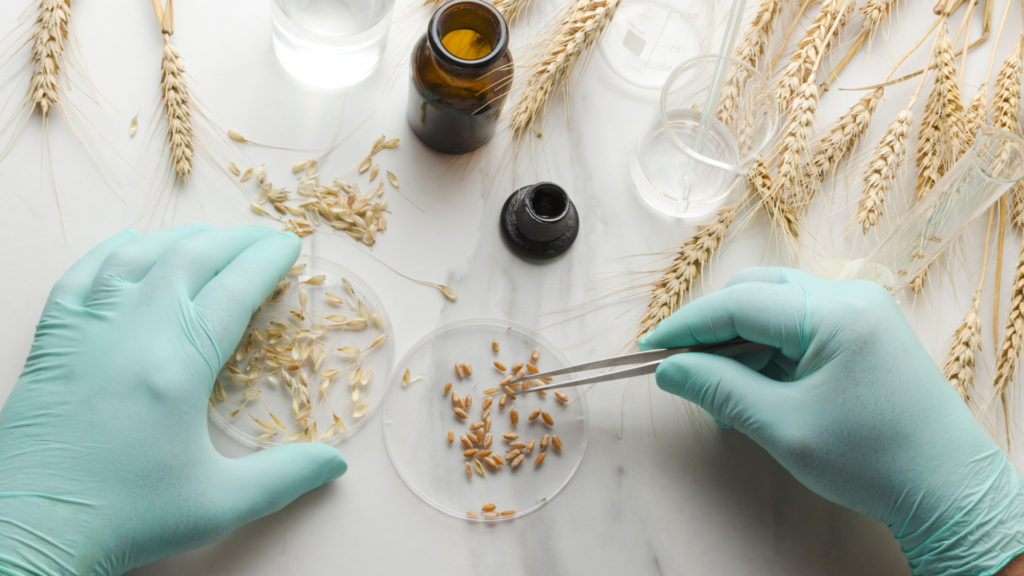New Technological Launches and Strategic Alliances To Expand Grain Analysis Portfolio

Written by: Dhananjay Punekar
Grain yield and quality depends on environmental as well as genetic factors. Moreover, analyzing grain is necessary for not only improving quality & yield of grains but also cereal breeding & understanding the effects of genes on grain development. In addition, escalating need for determining starch, mineral, proximate, and amino acid composition in grains of barley, oats, and rice will enhance demand for grain analysis in the upcoming years.
Furthermore, grain yield is a key trait for agronomists & plant breeders, and hence label-free protein quantification, a mass spectrometry-based method used for determining & quantifying relative differences in two or more biological samples to label proteins, is used for analyzing protein yield-contributing feature of wheat grain. Reportedly, grain yield & grain protein content are key traits in wheat bread.
This has resulted in a massive need for analyzing grain characteristics.
Whole grains are rich in phytochemicals such as flavonoids, alkylresorcinols, phytosterols, lignans, and benzoxazinoids.

However, mass spectrometry along with liquid chromatography method is utilized for extensively analyzing contents of phytochemicals in whole grains of wheat, rye, barley, and oats, due to its huge sensitivity and dynamic range. Additionally, the need for improving yield & quality of grains has resulted in massive investments by market players for developing new grain analyzing technologies.
Apart from this, firms are entering alliances, launching new technologies, and acquiring firms to expand their customer base as well as regional presence. According to Allied Market Research Report, the global grain analysis market is anticipated to gain revenue worth nearly $3,853.8 million by 2030.
Following are some of the current trends witnessed in the global grain analysis market.
Entering an alliance or acquiring another firm is one of the key strategies adopted by market players to expand its product as well as service offerings. In June 2022, Eurofins Scientific, the leader in food, environment, pharmaceutical, and cosmetic product testing and agroscience contract solutions, acquired a major stake in Saudi Ajal, a food, tobacco, and pharmaceutical testing lab in Saudi Arabia. Reportedly, the strategic move by Eurofins Scientific is aimed at expanding food & pharmaceutical products testing offerings in Saudi Arabia.
Such initiatives are projected to expand product testing portfolio of firms, and will increase profitability of grain analysis market in coming years.
In December 2021, Mérieux NutriSciences, the global leader in food safety, quality, & sustainability, acquired Dyad Labs, a top nutraceutical firm, for expanding strongly in the food supplements market in North America. Moreover, Dyad’s expertise in food supplement testing integrated with Mérieux NutriSciences’ effective delivery of wide solutions to food & nutrition sectors is projected to open new avenues of growth for the grain analysis market in forthcoming years.
Launching of new technologies is also predicted to bring a paradigm shift in any industry and the grain analysis industry is no exception. In May 2022, Neogen@Corporation, a global food safety firm based in the U.S., introduced an improved version of Veratox® for peanut allergen test. Moreover, the new version of Veratox®, an enhanced form of quantitative peanut ELISA assay, is set to improve sensitivity as well as flexibility of all peanut samples along with retaining rapid time-to-result and simple testing method protocols based on Veratox product line.

In countries such as the U.K., farmers have been advised to get their grains analyzed as fertilizer & grain costs have skyrocketed.
For the record, in 2022, the prices of grains & fertilizers in the U.K. have increased humongously. Hence, state authorities have urged farmers to monitor fertilizer performance and assess nutritional success of food during harvest with help of grain analysis. All such moves will offer new growth avenues for grain analysis business expansion in coming years.
Furthermore, new research on grain analysis revealed the success of nutrient management strategy.
For instance, the value of making use of grain analysis has helped in determining phosphate deficiency in people. Moreover, based on grain analysis, the consumption of cereal crops and food containing phosphate was recommended for people.
In addition, grain analysis is expected to provide new insights & understanding of soil health as well as bioavailability of nutrients of soil.
Apart from this, it will also give information regarding soil sampling, crop analysis, and phosphate management. As per new study, grain analysis will be helpful in determination of final crop performance along with summarizing combined effects of crop rooting, soil availability, use of fertilizers & their efficacies, and topsoil moisture.

Author Biography- Dhananjay Punekar is writer, avid reader & book lover, and interested in watching sports.
He holds a postgraduate degree in management and is working as a Sr. Specialist Content Writer at Allied Market Research.
He can be reached at dhananjay.punekar@alliedanalytics.com










